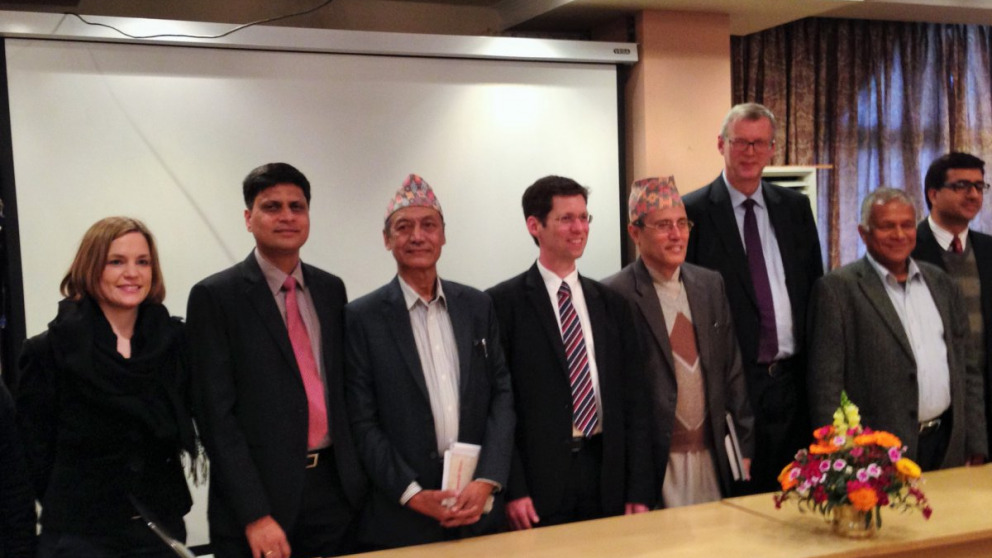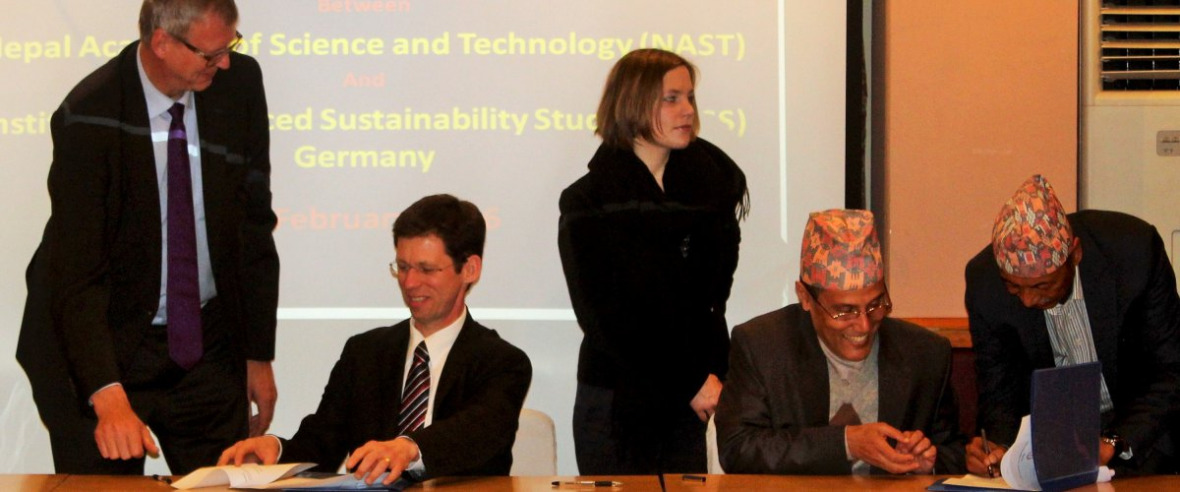Headline:
Air Quality and Climate Change: Nepalese Academy and IASS Sign Agreement for Scientific Cooperation

The Nepal Academy of Science and Technology (NAST) and the IASS are seeking to strengthen their cooperation in the area of sustainability research. On 24 February, NAST Vice Chancellor Jiba Raj Pokharel and IASS Director Mark Lawrence signed a memorandum of understanding for scientific cooperation at a ceremony attended by the German Ambassador to Nepal, Matthias Meyer. “This cooperation with Nepal is a matter dear to my heart. I have visited Kathmandu on several occasions over the last decade, and it has become increasingly evident that urgent action is needed to combat the immense problem of air pollution across the entire country, especially in the Kathmandu Valley. Our cooperation can help Nepal not only by filling the gaps that still exist in the scientific understanding of the air pollution and climate change problems and possible mitigation measures, but also in more closely connecting science, politics, and society, so that scientific findings can best inform national policies, including progressive legislation and regulations in support of better air quality,” said Lawrence.

On top of the air pollution problem, which has grown over the last decades, Nepal is also already severely affected by climate change. Since the 1970s average air temperatures in the Himalayas have risen by more than one degree Celsius. Carbon dioxide emissions have been identified as the main cause of global warming. But especially in regions like southern Asia, air pollutants also contribute significantly to climate change, both directly – through the absorption of sunlight by black carbon in soot, for example – and indirectly through the deposition of soot on glaciers.
German Ambassador Matthias Meyer noted at the ceremony that while science can be difficult for the public to understand, its advancement contributes to making people’s lives easier. “Nepal falls among the countries which are vulnerable to climate change. And scientific innovation is the only way to save lives in the face of this challenge,” he added.
The memorandum of understanding will pave the way for joint research activities in Nepal. The IASS will provide access to personnel, resources, scientific expertise, and technical assistance as well as to instruments and atmospheric observations. In turn, the Nepalese Academy will make its resources in the region available, including its contacts to a broad range of academic and state bodies. Jiba Raj Pokharel said that the memorandum of understanding was only the beginning and that NAST would be working with the IASS to enhance the resilience of people to cope with the challenges posed by climate change in Nepal.
The IASS has been active in Nepal since 2012 with the research projects SusKat and – since 2015 – ELIAS. Both projects include special consideration of the Kathmandu Valley, where brick kilns, vehicle traffic, and open burning are major sources of air pollution. The SusKat research project aims to develop both a more comprehensive understanding of the physics and chemistry of the regional air pollution and, in its second phase, to support the introduction of local measures to reduce emissions. Regarding this second goal, SusKat and ELIAS work together, making sure that researcher’s findings are effectively communicated to Nepalese decision-makers in various ministries. ELIAS ensures that the insights gained in Nepal are communicated at an international level, and contributes to the work of initiatives active under the Climate and Clean Air Coalition (CCAC), whose work includes addressing black carbon emissions from brick production.
For further information, see:

